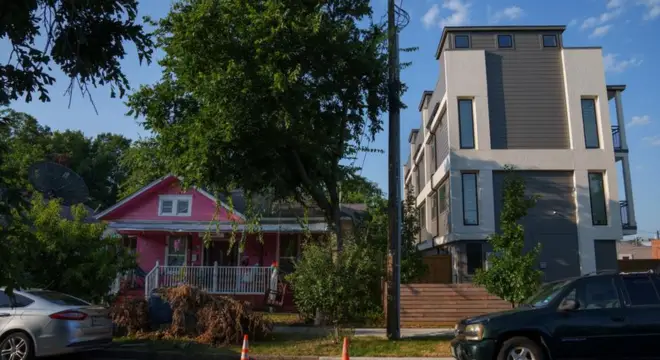Texas Lawmakers Approve $51B Property Tax Relief for Homeowners and Businesses
What if your property tax savings totaled hundreds or even thousands of dollars? How would that affect your home or business? Will that tax relief package be meaningful in Texas, or is it just one more temporary fix?
Texas legislators have just passed a huge $51 billion property tax relief package as a way to alleviate the taxes paid by homeowners and businesses throughout the state. Texas property tax relief packages typically provide savings by increasing exemptions for homeowners and providing relief to small businesses. But what does this mean for the future of Texas taxes and its economy?
Let’s dive into what this historic deal looks like and means to you.
2. The Details of the $51 Billion Property Tax Relief Package
The $51 billion property tax relief package approved by Texas lawmakers is designed to provide major financial relief to both homeowners and small businesses, with a strong focus on easing the tax burden for many. Here’s how the details break down:
Total Package Size:
- The $51 billion package is one of the largest tax relief initiatives in Texas history, aimed at cutting property taxes for residents and businesses across the state.
- The plan will be phased in over several years, with the aim of providing long-term financial relief.
Key Beneficiaries:
Homeowners:
- Homeowners stand to benefit significantly from the tax relief package, particularly through increased homestead exemptions and other measures designed to reduce property taxes.
- Many will see their property tax burden reduced by hundreds, if not thousands, of dollars per year.
Small Businesses:
- Small businesses in Texas are also major beneficiaries, with tax relief measures aimed at reducing their operational costs and helping them grow.
- The inventory tax exemption is one of the key components that will directly lower the tax burden on small business owners.
Tax Exemptions:
Homestead Exemption:
- The homestead exemption for homeowners is going from $100,000 to $140,000 and will save Texas residents a lot of money on property taxes.
- This policy change will provide a direct and evident benefit for homeowners, especially those with higher-valued homes.
Seniors/Disabled Texans:
- For elderly and disabled Texans, the exemption will increase from $10,000 to $60,000. More relief for those persons who may be on a fixed income and therefore more vulnerable to increasing taxes.
- This is intended to assist seniors and disabled individuals in maintaining their homes and subsequent revenue source.
Inventory Tax Exemption:
- The relief offered by the exemption from inventory tax will significantly help businesses, particularly businesses that are holding lots of inventory. This will help reduce the business’ tax liability and create more available funds for reinvestment in the company’s operations.
- With less tax being paid on their inventory, businesses will be able to access resources that can be used to help grow their businesses, expand operations, and add employees.
3. How Homeowners Benefit from the Tax Relief
The newly approved $51 billion property tax relief package is a big win for Texas homeowners. Here’s how it’s expected to impact them directly:
Impact on Homeowners:
- If your property’s value is about $302,000 (about the Texas average) you will probably save more than $500 each year in property taxes.
- Most of these savings come from higher homestead exemptions and the compress of school tax rates.
Specific Savings on School Taxes:
- A major part of the relief comes from the school tax rate compression, which is where the state puts in more money so schools rely less on local property taxes.
- For the average homeowner, this means hundreds of dollars in annual savings—just from the school portion of your tax bill.
Potential Long-Term Effects:
- In time, this could make home ownership affordable to more households including first-time buyers and those on fixed incomes.
- This action would also stop or slow the rise in local property taxes, depending on whether school districts and cities balance their budgets.
- And with larger exemptions, even more of your homes value is protected from taxation, helping maintain the amount of tax you pay, even with new property value increases.

4. Relief for Businesses
Texas businesses—especially small ones—are also major winners in this property tax relief package. Here’s how the plan helps them:
Inventory Tax Exemption:
- One of the major changes is the $125,000 exemption on the inventory tax for businesses.
- This means that businesses will no longer have to pay property taxes on inventory valued under that number, a substantial cost savings for retailers, manufacturers and local stores.
- This is crucial for seasonal businesses that carry large inventories at certain times of the year.
Small Business Impact:
- For small business owners, this tax break can translate into thousands of dollars saved annually.
- That savings can be reinvested into hiring more employees, upgrading equipment, expanding their services—or simply keeping their doors open during tough economic times.
- It also levels the playing field a bit more between large corporations and local entrepreneurs.
5. Financial Implications and Sustainability
Now let’s talk money—because while this tax relief sounds great, it comes with a hefty price tag and long-term questions.
Cost of the Package:
- The total cost ? An incredible $51 billion over two years.
- All of it will be paid for mostly by Texas’s record budget surplus, thanks to increased sales tax revenue and oil & gas revenues.
- Lawmakers say this is the proper use of surplus funds – putting money back in the hands of Texans.
Sustainability of the Package:
- While the relief is welcomed, experts warn that depending too heavily on surplus funds isn’t a sustainable long-term strategy.
- If revenues drop in future years, the state might struggle to continue this level of relief without cutting spending elsewhere or raising other taxes.
Effect on Future Budgets:
- If oil prices decline or consumer expenditures soften, future budgets may be tighter. Lawmakers will be scrutinized to preserve relief levels, especially with elections nearing.
- There will also be reduced discretionary spending for investments into public services, from education to healthcare to infrastructure..
6. Reactions from Lawmakers and Public
The $51 billion property tax relief package didn’t just make headlines—it also sparked plenty of reactions from lawmakers, businesses, and everyday Texans.
Bipartisan Support:
This deal had strong bipartisan support, which is not something you see often. Leaders from both parties understood the financial burden on homeowners and small businesses, especially with increasing property values across Texas.
This broad consensus indicates property tax reform may still be a common priority in future sessions.
Lawmakers’ Arguments:
While most supported the deal, the reasoning varied:
- Republican lawmakers praised the relief as a smart use of the state’s budget surplus and a step toward long-term tax reform.
- Democratic voices, while largely supportive, emphasized concerns about whether the package does enough for renters or public school funding in the long run.
Business and Public Reactions:
Local businesses, especially small businesses, welcomed the exemptions for inventory taxes, calling it a “long-overdue relief” that may give them a chance to grow or even just survive.
Homeowners, especially those on a fixed income or dealing with rising appraisals, expressed relief as well.
Public Sentiment Toward the Package:
Public sentiment about the change appears to be generally positive—many Texans feel the state is finally addressing a problem that has lingered for far too long. And there is cautious optimism, as residents are waiting to see how soon and how smoothly the promised savings materializes on their property tax statements.
7. Critics and Controversies
While the $51 billion property tax relief package has been widely praised, it hasn’t come without its share of pushback and debate.
Criticism of the Package:
Some advocacy groups and policy experts have raised concerns about fairness and long-term affordability.
They argue that:
- The package primarily benefits property owners, leaving out renters who are also affected by rising housing costs.
- Wealthier homeowners might receive a larger share of the savings, raising questions about equity.
Disagreement from Some Lawmakers:
Not all lawmakers supported the deal. Some Democratic legislators voiced concerns regarding this temporary relief and the further degradation of education funding, noting that public schools are fairly dependent on property tax. Others contended that the state should analyze tax reform more comprehensively rather than relying on short-term solutions.
Impact on Local Services:
One of the biggest points of controversy is whether this tax relief could undermine funding for local services.
There’s a growing worry that:
- Public schools, road maintenance, emergency services, and local governments may face funding gaps in the future.
- Without a stable replacement for the lost tax revenue, communities might struggle to maintain current service levels.
Conclusion
Texas’s $51 billion property tax relief package offers plenty of good news for both homeowners and small businesses—providing real value and real savings particularly through increased exemptions and decreased inventory taxes. The question that remains is: when we get to-day one of implementing this package, will this relief remain sustainable long-term without jeopardizing local services?
So what do you think about this deal? Will this make your community better or worse to live in? Let us know in the comments below!


